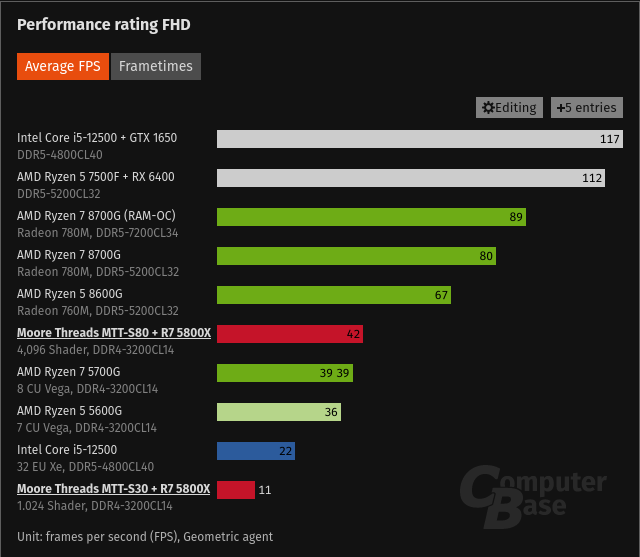New Chinese GPU arrives to challenge Nvidia's AI dominance but falls woefully short - Loongson unveils LG200 GPGPU, up to 1 Tflops of performance per node
At a high level, the Loongson LG200 is a highly parallel processor akin to AI and HPC GPUs by AMD and Nvidia. Loongson's LG200 supports the OpenCL 3.0 application programming interface (API) for compute, which is good enough for high-performance workloads including AI and HPC.
The block diagram of Loongson's LG200 depicts a processor organized in four clusters, each featuring 16 small ALUs, four bigger ALUs, and one huge ALU or a special-purpose unit. Unfortunately, we cannot draw any conclusions from analyzing the diagram, as it is light on actual technical detail.

https://www.tomshardware.com/pc-com...pc-gpu-up-to-1-tflops-of-performance-per-nodeLoongson has yet to disclose the specifications of its LG200 processor. We know it supports INT8 data format for AI workloads and probably FP32 and FP64 for graphics workloads, respectively. Also, Loongson claims that the LG200's compute performance is from 256 GFLOPS to 1 TFLOPS per node, though it didn't disclose the precision it used for the metric.
Even if the company used FP64 for its performance claims, the processor is dramatically slower than modern GPUs.
Blacklisted Chinese GPU developer secures $280 million in funding - Biren gets cash infusion from Guangzhou government-backed investors
Biren Technology, a Chinese AI GPU designer, has recently obtained an investment of ¥2 billion (approximately $280 million USD) from investors backed by the Guangzhou government, reports Bloomberg. This investment follows the company's inclusion into the U.S. government's Entity List over a year ago and layoffs to cut costs. With $280 million, the company has enough funds for ongoing operations.
The addition of Biren to the U.S. Department of Commerce's Entity List posed significant challenges to the company, limiting Biren's access to TSMC's leading-edge process technologies. Biren's key challenge is ensuring a steady supply of its AI GPUs, possibly from China-based fab SMIC. To do so, Biren has to redesign its BR104 ASIC for SMIC's 2nd generation 7nm-class process technology or develop a new chip from scratch. Meanwhile, whether a Biren ASIC made by SMIC will be as competitive as its BR104 made by TSMC remains to be seen.
https://www.tomshardware.com/pc-com...on-from-guangzhou-government-backed-investorshe addition of Biren to the U.S. Department of Commerce's Entity List posed significant challenges to the company, limiting Biren's access to TSMC's leading-edge process technologies. Biren's key challenge is ensuring a steady supply of its AI GPUs, possibly from China-based fab SMIC. To do so, Biren has to redesign its BR104 ASIC for SMIC's 2nd generation 7nm-class process technology or develop a new chip from scratch.




